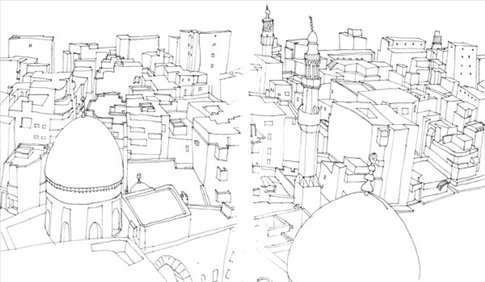
Old, or rather historic, or rather Fatimid, or rather
Islamic Cairo has changed its name almost as often as rulers have come and gone
over the centuries. The most recent of the names [old and historic] are
designed to reduce the emphasis on precisely what makes this part of the city
so endlessly fascinating – its rich heritage of Islamic art and architecture.
For the past week I have wandered its lanes and alleys.
Everywhere there is a jumble of modern apartments, Ottoman villas, and Mamluk
and Fatimid domes. Because Cairo is a living city there is no limit to the
intermingling. Windows are cut into the walls of a 9th Century
fortress. The arched façade of a hospital remains, but not its once domed roof.
A Turkish barrack, taken over by the British during their time here, lies
abandoned, mortar crumbling down sandstone walls.
From the roofs of buildings, or indeed any high place, the
city stretches out in greys and browns. The horizon is not visible – dust and
pollution put paid to that - but minarets and domes push up between habitations
and steadily recede into the distance.
The best of all the high places is the minaret of the mosque
of Ibn Tulun. One of the oldest, and certainly the largest mosque in Cairo, its
architecture is unique in the region. Its closest cousin is the Great Mosque of
Samarra, Iraq on which it was based. The minaret has an external spiral
staircase, and from the top there is no end to the dizzying views over old and
new quarters of the city.
At the eastern end of the mosque
is the Beit al-Kritliyya, or 'House of the Cretan Woman', now the Gayer-Anderson Museum
after its final resident, a retired Major and collector of Asian and Middle
Eastern art and artefacts. The second floor of its central hall is ringed with
wooden screens, and from here the women of the household looked down on
intrigues and plots in the room below.